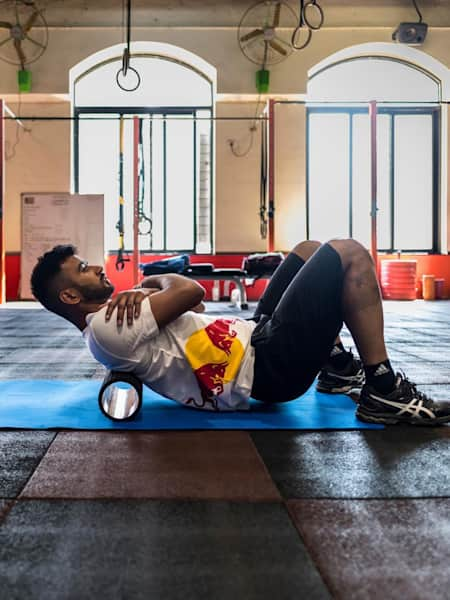Have you ever wondered why you see some people using foam rollers down at the gym? To many, it’s an essential tool of their training lives, while for others it can be seen as an instrument of torture, best avoided wherever possible.
Yet, there are many reasons why you should be using one and we’ve been in touch with TriggerPoint’s senior researcher Dr Kyle Stull to find out what they are.
1. Improve movement patterns
“Tissue can become stuck through habitual patterns, which could be by going through the same motions repeatedly, or by just sitting and through the repetition of not moving,” says Stutt.
“Instead of releasing a muscle that feels tight, we can to use a roller to get people to move better. For example, rolling on a tight hip flexor will help the glutes activate and perform better.“ We know that the majority of injuries aren't impact traumas, but arise through overuse. In improving the pattern of movement, we can reduce the stress on these tissues.”
2. Help with repairing tissue
Using a foam roller can also assist with your recovery rate from a tough training session. Stutt explains that by using a foam roller, you can help to boost supply of nutrients to damaged muscles to accelerate tissue repair.
“Circulatory fluids and waste products need moving around, and by doing this with a foam roller you can encourage better circulation, and expulsion of metabolic waste,” he says.
3. Reduced DOMS
By the same token, using a foam roller can keep tired and torn muscles more supple than they’d otherwise be, while reducing Delayed Onset of Muscle Soreness.
“After an intense workout, soreness will peak after 24 hours if you use a foam roller,” says Stutt. “Soreness can peak at 48 hours without the use of a roller.”
4. Preparation
Using a foam roller before you work out can also lead to better physical performance when it comes to doing your chosen activity.
“The better we prepare for our workouts with comprehensive warm ups, the less we have to worry about recovery or injury,” Stutt says. “Using a foam roller pre-workout can help ensure that you’re moving better.”
5. Focus pre-workout
It’s not just about physical preparation, either. Stutt says that rolling over key muscle groups before exercise can help to increase cognitive awareness and focus.
Generally speaking, the human population tends to be over-stimulated with inputs like caffeine, high-tempo music or the stresses of something like driving in traffic,” he says. “Using a roller pre-workout will help with mental preparation. Just five to 10 minutes use will make you more cognisant about your body and help you get in ‘the zone’.”
6. Relaxation
Ever felt that you can’t relax after a long stressful day at work or a particularly hard training session? Stutt recommends using your foam roller over tense muscle groups 60-90 minutes before bed for improved relaxation and sleep.
“If you hold pressure into tissue and sustain that pressure for a period of time, between 30 to 90 seconds, you engage the nervous system reflex for relaxation,” Stutt says. “Reduced perception of pain is an added bonus, so if you have trouble sleeping with aches and pains of the day, this could be effective for you.”
7. Chronic pain reduction
Speaking of pain reduction, using a foam roller can also be effective in alleviating long-term chronic pain too.
“Ninety to 120 seconds spent on an area will immediately temporarily reduce pain,” says Stutt. You’ll feel better for 10 minutes, while this will also help you adopt better movement patterns which, if done regularly, can result in long-term improvements.”
8. Flexibility/mobility improvements
Along with generating those improved movement patterns, foam rolling can also result in greater range of movement and flexibility too.
“There’s tonnes of research around this subject,” says Stutt. “Rolling a muscle will help its surfaces and connective tissue slide across each other better, which will help with overall mobility.
9. Wake up easier
Finally, for those who aren’t morning people, foam rolling can help you wake up more easily each day.
“Foam rolling is effectively a small core workout,” says Stutt, “which can help wake up the body by improving circulation, raise your heart rate, and activate muscles. Also, if you suffer from something like plantar fasciitis, perhaps aggravated by a long day the day before, you can try rolling of the bottom of the foot to help boost comfort for the rest of the day.”







